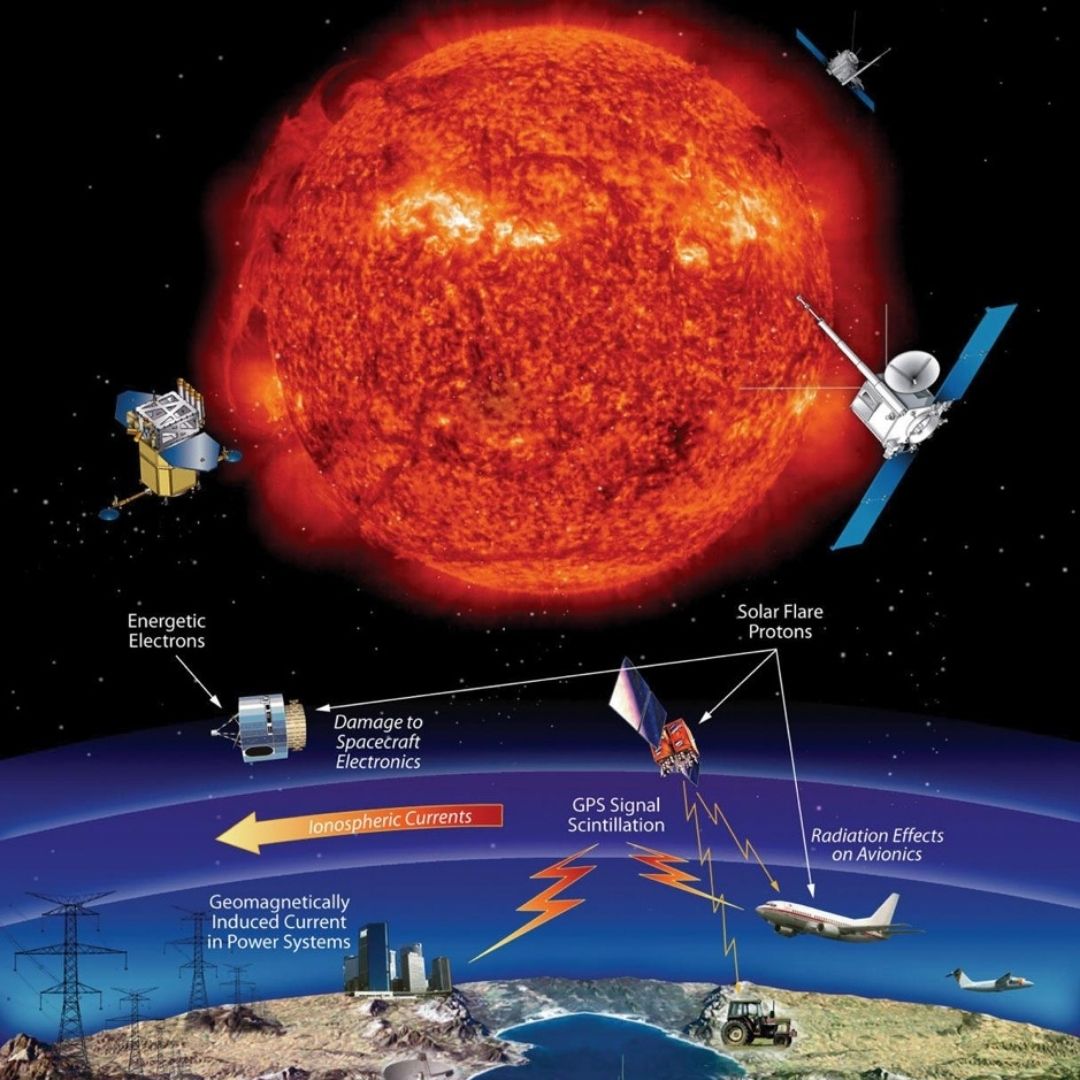Predicting and detecting extreme events to protect society
Space weather—energetic particles and magnetic clouds that storm through space—impacts Earth’s upper atmosphere as well as near-Earth space. Extreme space-weather events can halt our highly interconnected society by increasing drag on satellites, disrupting radio communications, and degrading electronics in weather, communication, and GPS navigation satellites. They can cause catastrophic damage to long baseline systems on the Earth’s surface, including electricity grids and oil pipelines. Geomagnetic storms can also endanger astronauts and expose passengers in high-flying airplanes to damaging radiation.
LASP has a long and successful record of designing and building instruments to measure the Sun’s energy output to improve our understanding of solar storms and their effects on Earth—and to eventually predict them. Our ultraviolet instruments have reliably gathered data on many NASA missions, from Mariner 6 to the ongoing GOLD mission; our electric field and energetic particle instruments have helped unravel fundamental space plasma phenomena at the heart of space weather events; and our institute was recently selected to build AETHER for NASA’s upcoming Geospace Dynamics Constellation mission. This instrument will help us develop the capability to detect and predict extreme conditions in space in order to protect life and society—and to safeguard human and robotic activities at and beyond Earth.
LASP also manages numerous data centers and datasets that are crucial for advancing space- weather research. These are available through a LASP-operated Space Weather Portal, part of CU Boulder’s Space Weather Technology, Research, and Education Center.

